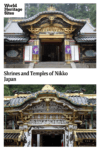Shrines and Temples of Nikko
By Rachel Heller
What are the Shrines and Temples of Nikko?
The Shrines and Temples of Nikko UNESCO site is a complex of 103 buildings scattered in a mountainous forested area. The temples mostly date to the 17th century, but the tradition of worshipping on this site, long considered sacred, goes back many more centuries.
Disclosure: This article contains affiliate links. Making a purchase through an affiliate link will mean a small commission for this website. This will not affect your price.
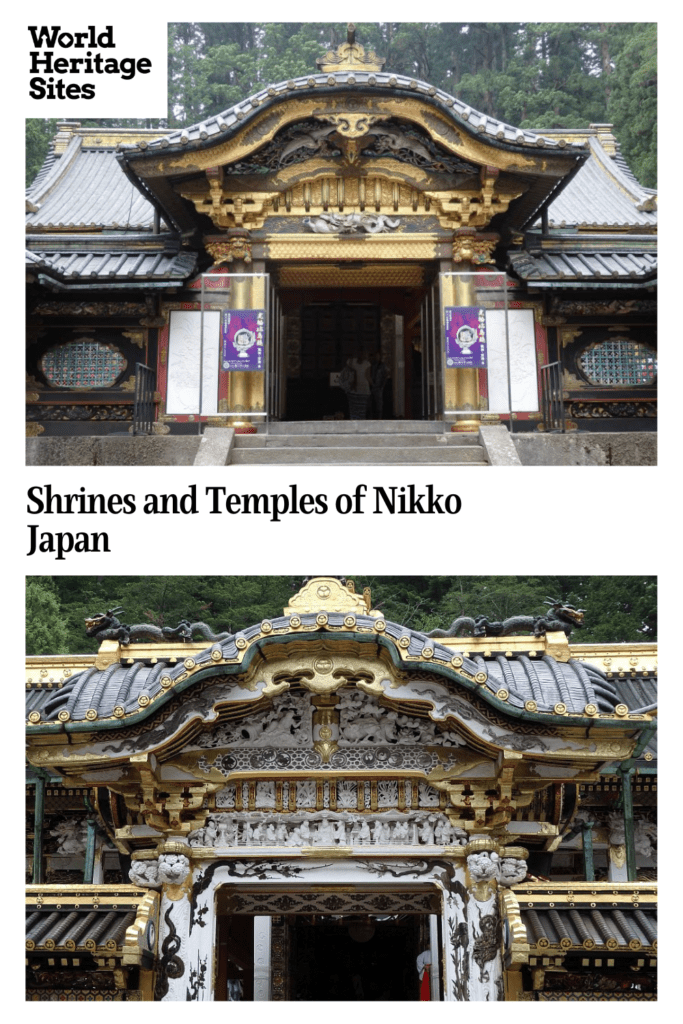
Why is Nikko a UNESCO World Heritage site?
According to UNESCO, the site is worthy of the designation because its “shrines and temples are a reflection of architectural and artistic genius … reinforced by the harmonious integration of the buildings in a forest …” In other words, the buildings and their setting are stunningly beautiful.
The structures are “a perfect illustration of the architectural style of the Edo period as applied to Shinto shrines and Buddhist temples.” The quality of this achievement continued to be influential later.
At the same time, the entire ensemble is “an outstanding example of a traditional Japanese religious centre, associated with the Shinto perception of the relationship of man with nature, in which mountains and forests have a sacred meaning and are objects of veneration.” This tradition continues to this day.
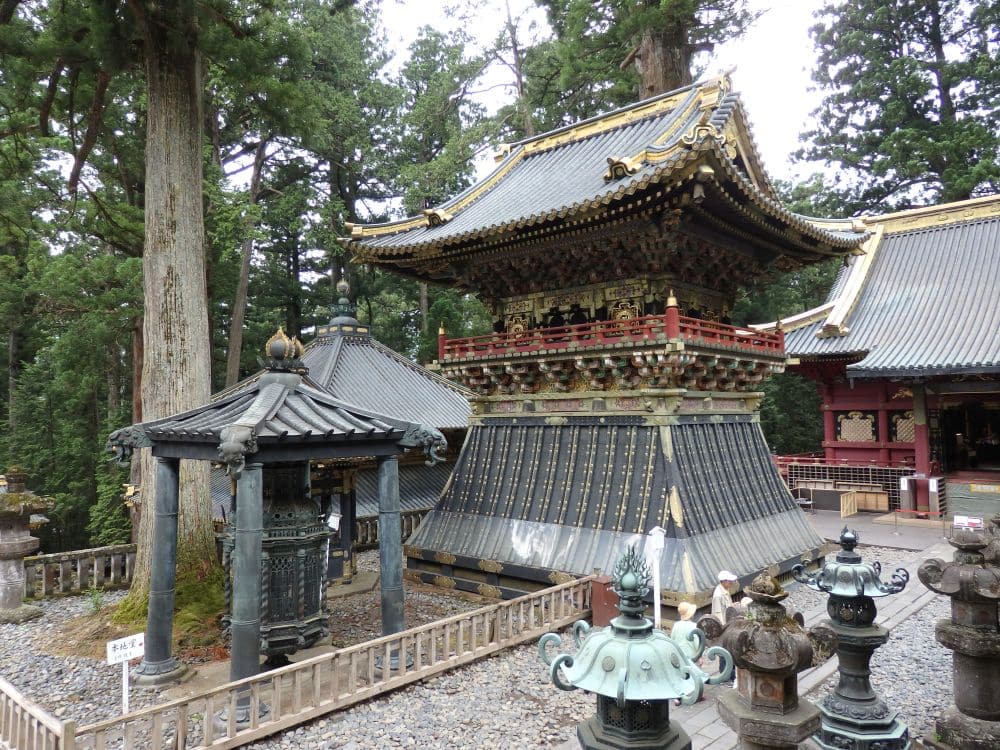
What can you expect on a visit to Nikko?
The site is made up of three main shrines (two Shinto and one Buddhist) and also includes the beautiful forest around them. The shrines stand on hilly terrain and smaller shrines can be found deeper in the forest.
Futarasan Shrine
This is a Shinto shrine comprising 23 structures including temples, gates, bridges and torii (traditional gateways). Most date to the 17th and 18th centuries, although the shrine was founded in the 8th century and the site has been considered sacred even longer.
The buildings of Futarasan Shrine are distributed over three different locations within the natural park at Nikko. One, the main shrine, is in the forest not too far from Tōshō-gū and Rinnō-ji. The “Middle Shrine” is on the shore of Lake Chuzenji and the “Inner Shrine” is at the top of a mountain within the park. Futarasan also includes the pretty red “sacred bridge” at the entrance to the park.

Rinnō-ji Shrine
This is a Buddhist shrine with 38 structures, mostly dating to the 17th century, but the site was used by Buddhists monks as early as the 8th century. The “Three-Buddha Hall” has some wonderful statues of various gods, while the “Treasure House of Rinnō–ji” has some exquisite Buddhist art inside. The elaborately-decorated mausoleum of a Tokugawa shōgun is also on this site, even though it counts as a Shinto shrine rather than Buddhist.
Tōshō-gū Shrine
This Shinto shrine has 42 structures, most of which are from the 17th century. The buildings of this shrine, particularly the Yomeimon gate, are particularly ornate and, unlike the other shrines, use more colors besides the red that predominates at the others. Notice, too, the pretty pagoda.
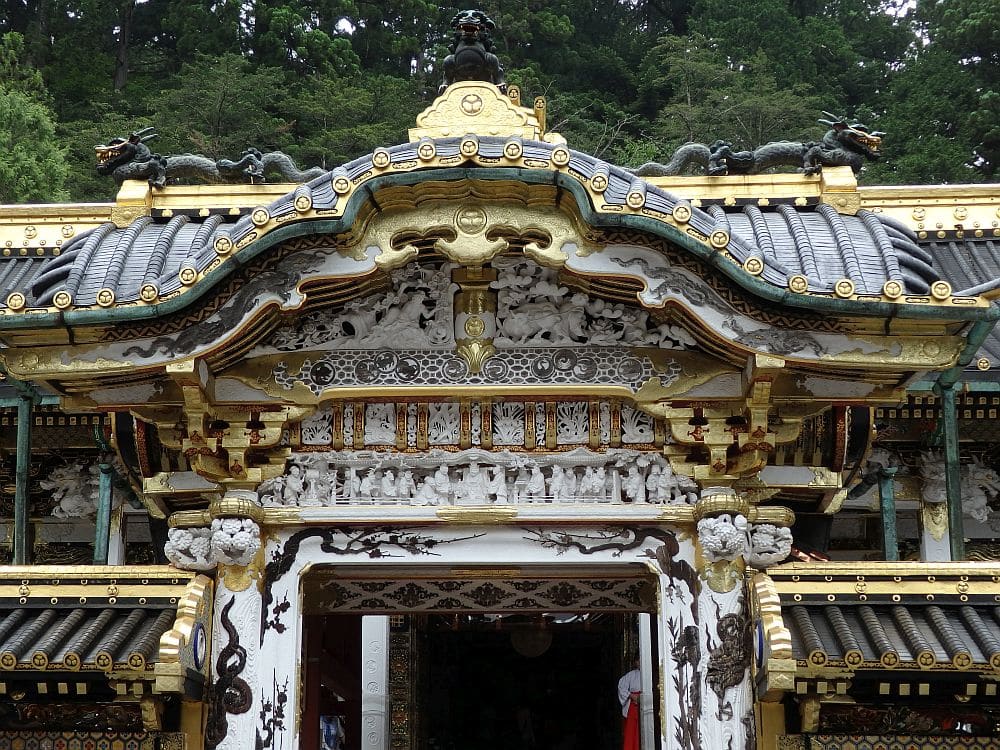
Is Nikko worth visiting?
Anyone traveling to Japan should have Nikko at the top of their list, not just because of the beauty of the buildings themselves, but also because of their setting in a lovely natural area of mountains and forest.
What sorts of travelers would like Nikko?
Certainly anyone interested in Japanese traditional architecture or religion should visit Nikko. Art enthusiasts would also love it. The natural park where the temples stand is a great place to hike as well: up and down hills, through the forests, to see waterfalls and spot wildlife, including monkeys. In the fall, it’s a great place to enjoy the fall colors.
Tips for visiting Nikko
Put aside at least a day for Nikko, but take two full days – three nights – if you want to wander further into the forest than the main shrines.
Book your Nikko accommodations here.
Be prepared for a lot of walking. The temples, gates, mausoleums and other structures are ranged up a hill in the forest, so you’ll be on your feet all day. Take water along with you, as well as good supportive shoes.
Take a private walking tour of Nikko.
Don’t bother paying to cross the Sacred Bridge. There’s a free modern bridge right next to it, and from the modern bridge you’ll see the graceful lines of the Sacred Bridge even better.
Each shrine grouping charges a separate admission fee. There is no single ticket available to cover all of them.
Nikko is a popular destination, reachable as a day trip from Tokyo, so you won’t have it to yourself on a weekend or during the tourist season. Off-season, but especially if you go to some of the temples further into the forest, you might be able to find some solitude to enjoy the forest.
Be respectful inside the temple areas. They are still in use to this day.
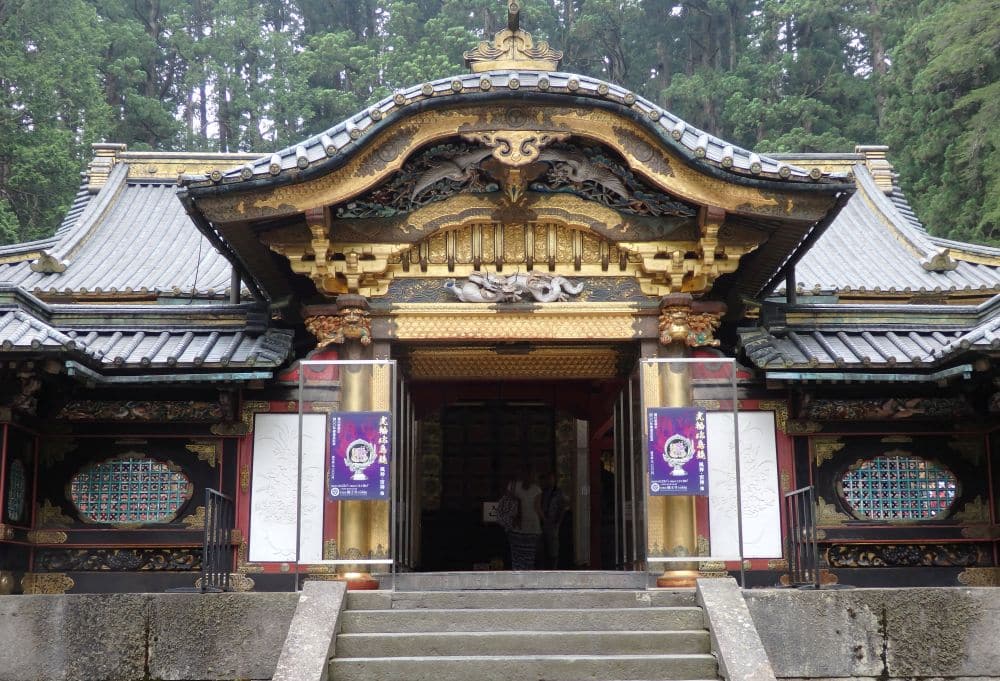
Where is Nikko?
The easiest way to get to Nikko is by train. Nikko is 125 kilometers (78 miles) north of Tokyo, about two hours away if you take the fast train (the “limited express” train) from Tobu Asakusa Station or Shinjuku Station. The slower “express” and local trains are cheaper, but you’ll have to change trains at least once. The other, faster option is to take the JR Tohoku Shinkansen (bullet train) from Tokyo or Ueno Station to Usunomiya Station, then the JR Nikko line from there.
When you arrive at Nikko Station, the UNESCO site is about a 20-minute walk away, or you can take a bus to the edge of the park.
Alternatively, you can hire a private guide with car for your group, leaving from Tokyo.
For more information about Nikko, its opening hours and admission fees, see Nikko National Park’s official website.
Have you been to Nikko? If so, do you have any additional information or advice about this UNESCO World Heritage site? Please add your comments below!

